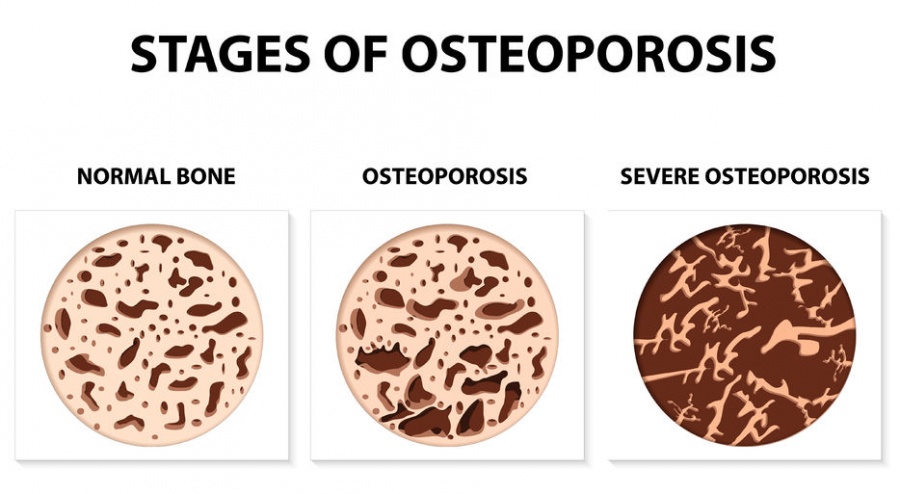Bones are a vital part of your body. They are the frame and support structure of your body, protect your organs and anchoring muscles. The bones in your body are constantly developing with the old bones breaking down and being absorbed and new ones replacing them. There are more new bones developed by your body than there are old ones being absorbed until you are about 30 years old. From this time onwards, the development process slows down and the rate of new bones being developed will be less than the bones breaking down. In other words, you will lose more bones than it replaces. Your bone density will decrease as you age, from your 30’s.
Your bones become progressively weaker and more brittle. When mild to moderate changes in the bone integrity occur, doctors call it the condition osteopenia. When significant bone loss starts to happen, it is called osteoporosis.
Osteoporosis
The progressive changes in your bones with the onset of osteoporosis do not cause painful symptoms, which makes it diifficult to detect. The risk of bone fractures resulting from the weakening bones becomes higher. The American Academy of Orthopedic Surgeons (AAOS) revealed that 50 percent of women and 25 percent of men aged 50 and older will suffer from a broken bone from osteoporosis. The injury may be in the wrist, arm, hip or leg. A broken hip is the most serious of these cases. It can cause restriction in movement and affect the quality of life of the affected person. In extreme case, the person’s life may be at risk as a result of a broken hip.
Causes of Osteoporosis
A specific cause of osteoporosis has not been identified by doctors. What they have determined are risk factors for osteoporosis and they are:
- Old age – The normal process of bone development will cause your bones to be weaker and more brittle and osteoporosis may come in.
- Family History – Those whose parents or siblings have experienced osteoporosis have higher risk of having it also.
- Race – Whites and people with Asian descent have higher risks.
- Unhealthy lifestyle – Smoking, excessive drinking, caffeine and lack of physical activity can contribute to having weak bones.
- Taking certain medications – Some medications such as anticonvulsants and glucocorticoids can actually cause bone mineral loss.
- Low body mass – People with low body mass have less bone mass.
- Lack of calcium and vitamin D – Low calcium diet can result to lower bone density
- Having experienced menopause – Decreasing estrogen level increase the risk of osteoporosis.
Osteoporosis has been described as a “silent “ disease because it does not show any symptom. The symptom, most of the time, is painful when the patient has already suffered a fracture.
While most of the identified risk factors are uncontrollable, there are a few that you can control like the intake of calcium and avoiding an unhealthy lifestyle. Work on these and avoid the bitter consequence of having osteoporosis and missing out on a lot of what a healthy life can offer.
